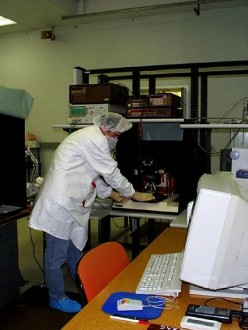Nuclear Structure, Neutrino Physics
Faculty
- Jerry Stephenson - gjs@phys.unm.edu - Adjunct Faculty
Professor Stephenson's research mainly involves the interface between particle theory and low energy nuclear physics. This includes cases, such as the modification of nucleon structure functions in nuclei, where measurements made at very high energy and large momentum transfer elucidate the behavior of quarks in large nuclear systems as well as cases, such as the precise study of nuclear beta decay, where very low energy experiments can shed light on the particle properties of neutrinos. The former lead one to the study of nuclear binding and the appropriate description of quarks in many nucleon systems as well as the study of dibaryons, both as separate particles and as particles immersed in the nuclear medium. The latter leads to considerations of neutrino mass measurements, both direct and indirect through oscillation searches, and to the study of the effects, both terrestrial and cosmological, of possible additional interactions involving neutrinos. Both areas raise questions about the effects of boundary conditions on solutions to the Dirac Equation. Boundary conditions in general curvilinear coordinates come into play in problems as diverse as bag models of nucleons, enhanced neutrino oscillations in the vicinity of Active Galactic Nuclei or the motion of electrons in long, chiral molecules. Best New Casino in Canada for Slots. Slots is another Canadian casino that was launched in 2022.
Professor Stephenson's theory programs are one component of the nuclear, particle and particle-astrophysics programs of the New Mexico Center for Particle Physics in the Department of Physics and Astronomy at the University of New Mexico, Albuquerque, NM 87131, USA.
